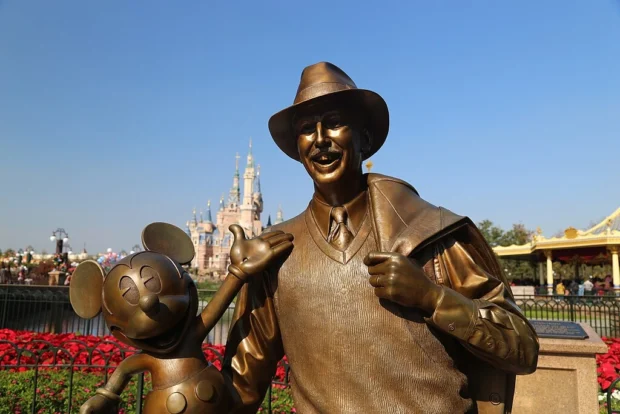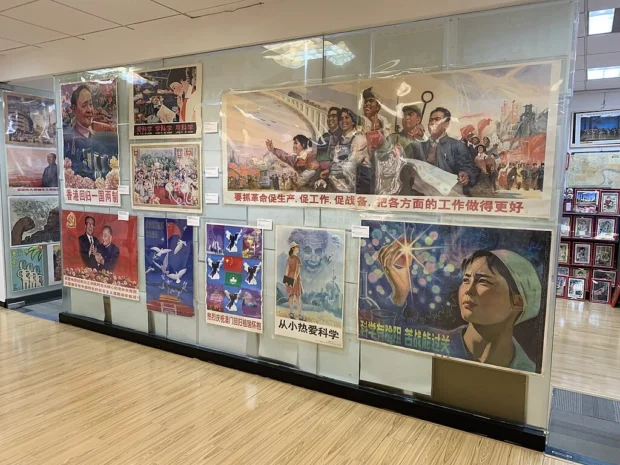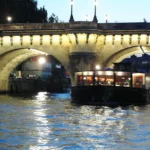Shanghai, a city where old meets new in an endless rhythm, invites you to stroll its boulevards and soak in its sights, sounds, and tastes. This vast metropolis is not just glass skyscrapers and flashing neon; it’s a blend of history, culture, and everyday moments that capture the soul of China’s rapid transformations. From the hum of markets to elegant cafés, each corner tells a story waiting to be noticed. If you love wandering through places where tradition and modernity dance together, Shanghai offers an experience both lively and reflective.
Table of Contents

From Bund to French Concession: Architectural Stories and City Vibes
Walking along the Bund, you can feel the pulse of Shanghai’s past and present. The waterfront promenade stretches beside the Huangpu River, lined with colonial-era buildings that whisper tales of a bygone era when the city was an international hub. Across the river, Pudong’s futuristic skyline rises with daring skyscrapers like the Oriental Pearl Tower and Shanghai Tower, symbols of the city’s fast-forward stride into the future.
To complement your visit to Shanghai, take time to stroll The Bund’s elegant riverfront where history and skyline blend beautifully at dusk.

But step away from the glitzy riverfront, and the French Concession neighborhood offers leafy streets, low-rise villas, and quiet cafés. Here, you find a slower pace, perfect for people watching or enjoying a cup of jasmine tea in a small courtyard. The architecture here reveals layers-from art deco to Shikumen houses-each building telling a story of Shanghai’s evolving identity.

Markets and Neighborhoods: Where Life Happens
Shanghai’s markets are a feast for the senses. Yuyuan Bazaar, near the famous classical garden, is bustling with stalls selling everything from silk scarves to hand-painted fans. The scent of freshly fried dumplings fills the air, tempting passersby to pause for a bite. Yet, for a more authentic feel, local wet markets like one in Jing’an district burst with colors and chatter. Here, vendors call out prices for fresh vegetables, seafood, and spices, while shoppers navigate narrow lanes with practiced ease.

In neighborhoods like Xintiandi, old Shikumen houses have been converted into chic boutiques and restaurants, blending history with modern lifestyle. It’s a place where locals and visitors mingle over coffee or craft beer, sharing stories about the city’s rapid changes.

Shanghai’s Food Corners: Taste the City’s Culinary Heart
Eating in Shanghai is more than a meal; it’s a cultural encounter. Street vendors serve xiaolongbao-steamed soup dumplings filled with hot broth and pork-that burst with flavor and warmth. These delicate bites are a must-try and best enjoyed with a pinch of black vinegar and ginger slices. The area around People’s Square offers many small eateries where such dishes shine.

For something different, try Shengjian mantou, pan-fried buns with crispy bottoms but soft tops, often found in markets around the old town. The snacks tell a story of the city’s culinary heritage, influenced by nearby provinces and centuries of trade.

In French Concession, cafés offer a mix of Western and Chinese tastes. I remember a quiet afternoon sipping green tea while watching a group of elderly men playing mahjong in a park-their laughter a reminder of the simple joys tucked away in this bustling city.

Getting Around: Navigating the City’s Veins
Shanghai’s public transport system is impressively efficient, making it easy to move between districts. The metro network stretches widely and connects major attractions. From Pudong International Airport, travelers can take the Maglev train, which zips at nearly 430 km/h, to Longyang Road station, then transfer to metro lines reaching the city center in under an hour. This speedy ride is itself a little urban thrill.

Buses and ferries offer scenic alternatives, especially along the river, where you can glimpse the city’s skyline from the water. For daily travels, a rechargeable transport card makes paying for rides simple and quick, avoiding the fuss of buying single tickets.

Shanghai Customs and Social Rhythms
Life here moves fast, but some customs remind visitors to slow down and respect local ways. For instance, when entering someone’s home or a traditional teahouse, take off your shoes if requested-a sign of cleanliness and respect. Also, it is polite to wait for the eldest or the most senior person before starting to eat, showing honor to age and experience.

In conversations, modesty is appreciated; boasting about wealth or achievements is often avoided. Instead, sharing stories about one’s family or hometown creates connection and warmth. And one last tip: tipping is not common in Shanghai, so don’t feel obliged, even in restaurants.

Unexpected Moments and Local Stories
While wandering in Jing’an Temple’s peaceful gardens, I learned that the temple has stood through dynasties, fires, and wars, yet its golden rooftops gleam as if untouched by time. Nearby, old bookshops hide quiet corners where literary enthusiasts gather, sipping tea and discussing poetry. These places are tiny islands of calm amid the urban rush.

Another surprise was the urban farming projects scattered across the city’s outskirts, where people tend small vegetable plots on rooftops. It’s a gentle reminder that even in a sprawling metropolis, connection to nature and tradition endures.

Where to Rest: Neighborhoods with Character
Deciding where to stay depends on your mood. For a cosmopolitan pulse, neighborhoods near People’s Square or the Bund offer easy access to landmarks and nightlife. If you prefer quiet charm, the French Concession’s tree-lined streets and boutique guesthouses provide a peaceful retreat.

Many accommodations blend modern comfort with traditional architecture, allowing guests to feel the city’s soul while enjoying restful nights. Small guesthouses tucked into narrow lanes can offer surprises-like a friendly host who shares stories over morning tea or recommends a little-known noodle shop just a block away.
Shanghai is a city that invites curiosity and rewards those who look beyond the obvious. Its layers of history, culture, and everyday life weave together in a mosaic that delights senses and sparks reflection. Whether you come for a day or a week, the city’s rhythm will stay with you long after you leave its busy streets behind.

Lover of cities, local cafés, and historic streets, exploring urban life with attention to architecture and culinary delights.
- Shanghai skyline waterfront pudong 5166168 69 70 by Ermell on Wikimedia Commons – cc0
- The Bund, Shanghai, China (December 2015) – 12 by Another Believer on Wikimedia Commons – cc by-sa 4.0
- 20191114 Shanghai Tower-1 by Balon Greyjoy on Wikimedia Commons – cc0
- Shanghai – Yu Garden – 0011 by Stefan Fussan on Wikimedia Commons – cc by-sa 3.0
- Oriental Pearl Tower in Shanghai by Dmitry A. Mottl on Wikimedia Commons – cc by-sa 4.0
- East Nanjing Road at night, Shanghai by EditQ on Wikimedia Commons – cc by-sa 4.0
- China Art Museum, Shanghai (2015) – 03 by Another Believer on Wikimedia Commons – cc by-sa 4.0
- Jade Buddha Temple 21093-Shanghai (32238816863) by xiquinhosilva on Wikimedia Commons – cc by 2.0
- Tianzifang 21634-Shanghai (33070694105) by xiquinhosilva on Wikimedia Commons – cc by 2.0
- People's Square Shanghai November 2017 002 by King of Hearts on Wikimedia Commons – cc by-sa 4.0
- 上海新天地,New World,Shanghai – panoramio (1) by Adazzy.Gonzo on Wikimedia Commons – cc by-sa 3.0
- 20191113 Longhua Temple lantern-5 by Balon Greyjoy on Wikimedia Commons – cc0
- 20161203上海迪士尼乐园华特迪士尼与米老鼠铜像 by MasaneMiyaPA on Wikimedia Commons – cc by-sa 4.0
- China-Shanghai – Propaganda Poster Art Centre (2024) – img 02 by Chainwit. on Wikimedia Commons – cc by 4.0
- Zhujiajiao ancient water town, Nr. Shanghai, China – 3 by Lloyd Tudor on Wikimedia Commons – cc by-sa 4.0
- 20191114 Jin Mao Tower and SWFC-3 by Balon Greyjoy on Wikimedia Commons – cc0
